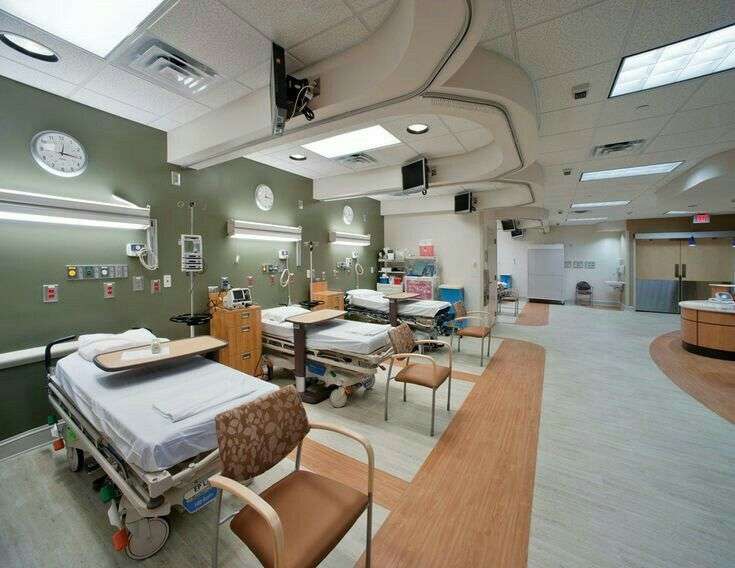
How to make your Hospital Space more Effective
December 14, 2022
“Building for Health: Strategies for Successful Hospital Expansion”
December 14, 2022In any industry, quality is mandatory…this is especially true in healthcare because healthcare involves nurturing wellbeing and saving lives. Setting a benchmark in quality in the healthcare segment requires a lot of efforts, dedication and involvement of every employee.
As a medical entrepreneur, if your dream is to provide world-class healthcare to your patients at reasonable cost, you will have to set a quality protocol for your hospital and assure that it is understood and followed by your team at every stage. You have to ensure that each and every tier of your organization’s workforce is on the same page and is totally committed to your vision of quality excellence so that you can ensure uncompromised delivery of excellence in healthcare at all times.
Quality assurance protocol in hospitals is a structured framework of all the measures formulated to raise the standards of excellence of medical care. This protocol detects any variabilities, inefficiencies, gaps and deviations from the SOP and prevents any problems or mishaps before they occur by defining methods and measures proactively.
5 things you should be aware while setting a benchmark
1. Everyone should be on the same page
Each cog and each bolt has to function properly for a machine to run smoothly. Similarly, each member of your team has to be aware of your quality principles and adhere to the protocol stringently for your benchmark of gold-standard quality to become a reality. Assuring quality healthcare is a cooperative and collaborative effort. You should outline your quality policies and protocol and ensure that every employee is dedicated to fulfilling it. A tiny gap can lead to a colossal avalanche in quality… and lead to a devastating landslide in the welfare of your patients. Educate your team about your quality vision by conducting seminars and workshops. Show them that you are serious by conducting regular appraisals, awarding achievements and reprimanding lapses.

2. Be Persistent in Monitoring
Many organizations make the mistake of becoming complacent about their quality markers over time. This leads to a downslide in patient experience. Quality assurance is not a one-time or a one-day activity. You have to assure that it becomes a habit for your team. Conduct workshops for upgradation of skills and periodic appraisals. Have feedback and review systems in place to assess performance.
3. Evaluate outcomes
It is not just enough to assess performance; you have to share the results of the feedback and reviews with your workforce and see that they feel accountable and responsible about maintaining the quality benchmark of your hospital. If every member of your staff starts taking ownership for their actions, quality targets will be met at every stage. Review and share feedback and information shared by patients, their families, and team leaders. Reward positive actions with recognition and bonuses.

4. Correct the lapses and bridge the gaps immediately
Periodic monitoring can help you speedily identify any lacunae in patient safety or wellbeing
If you identify any problems, find solutions without delay before they cascade into a crisis.
Rectification of problems may involve immediate investments but will lead to protection of patient welfare, hospital reputation and costs in the long term.
Some likely areas of change
- Investing in expansion and infrastructure
- Renovation of your existing space
- Makeover of certain areas
- Upgradation of equipment
- Transitions in SOP
- Investing in technology

5. Create a dedicated panel to overlook quality compliance
Assign the responsibility of quality assurance to a dedicated team of specialists who can help you set quality protocols, assess performance, evaluate deviations and initiate corrective measures. This panel of experts can steer your hospital towards your quality goals. They will be able to correctly review current procedures and upgrade them according to regulatory framework and firefight to correct discrepancies. Include leaders from every department and every speciality in this panel. This inclusive cross-section of employees will ensure that you don’t miss any factors that can negatively impact patient care. Alternatively, you can assign this responsibility to a third-party who will provide an unbiased assessment.
To summarize, quality assurance is the precursor to patient satisfaction. You can build your hospital’s brand image and construct your hospital’s reputation and success on the pillars of healthcare quality. If you need any assistance in setting a quality benchmark for your hospital, be sure to contact Hospertz, a leading healthcare consultancy firm of India.
Blog has been written by Dr. Vishal Jadhav, a veteran in the field of hospital consultancy with a rich experience of more than 20 years and founder of the Healthcare Consultancy Firm, Hospertz.
Dr. Vishal Jadhav, Director
hospertz@gmail.com
+91 9867712705/ 9820833149




